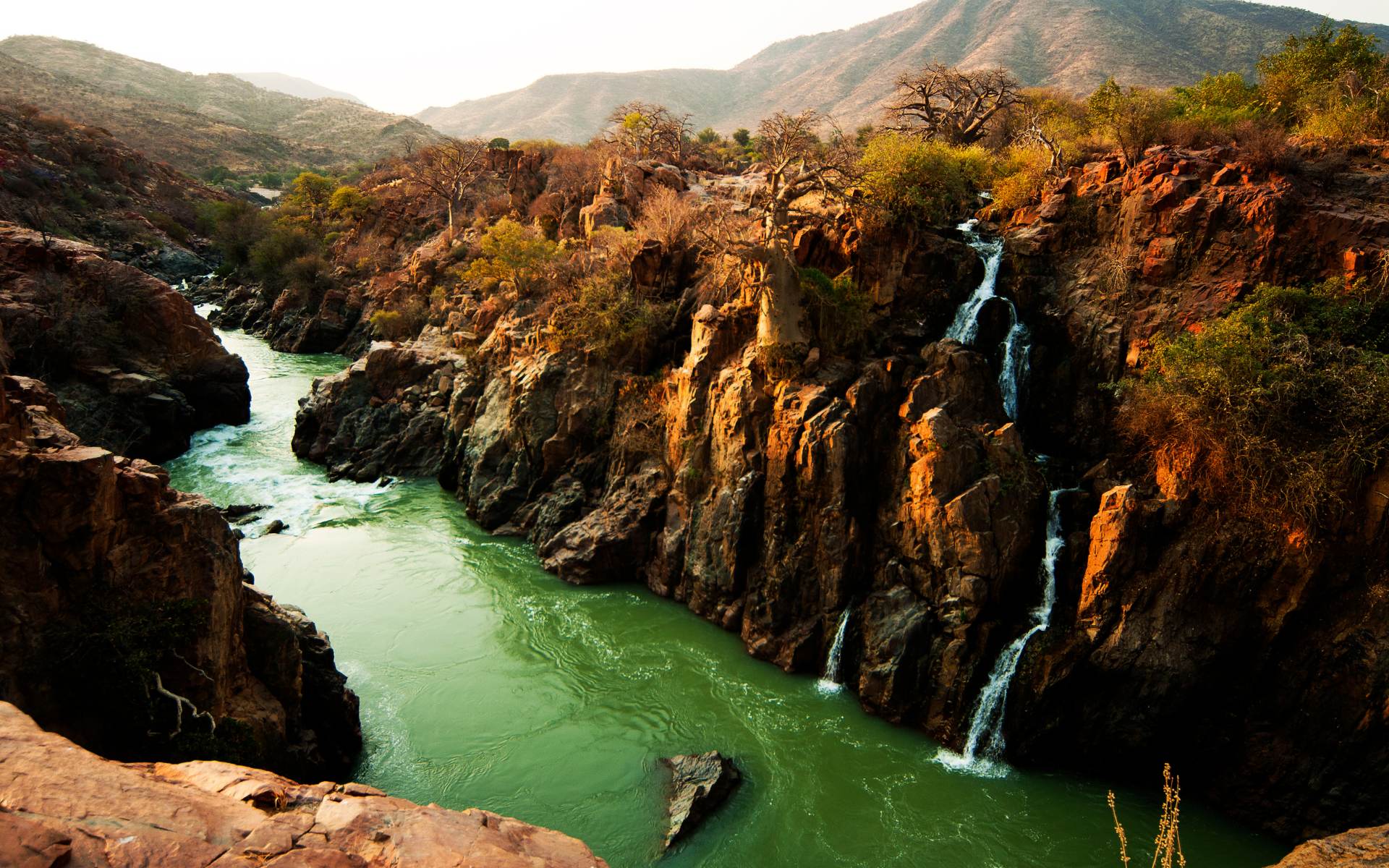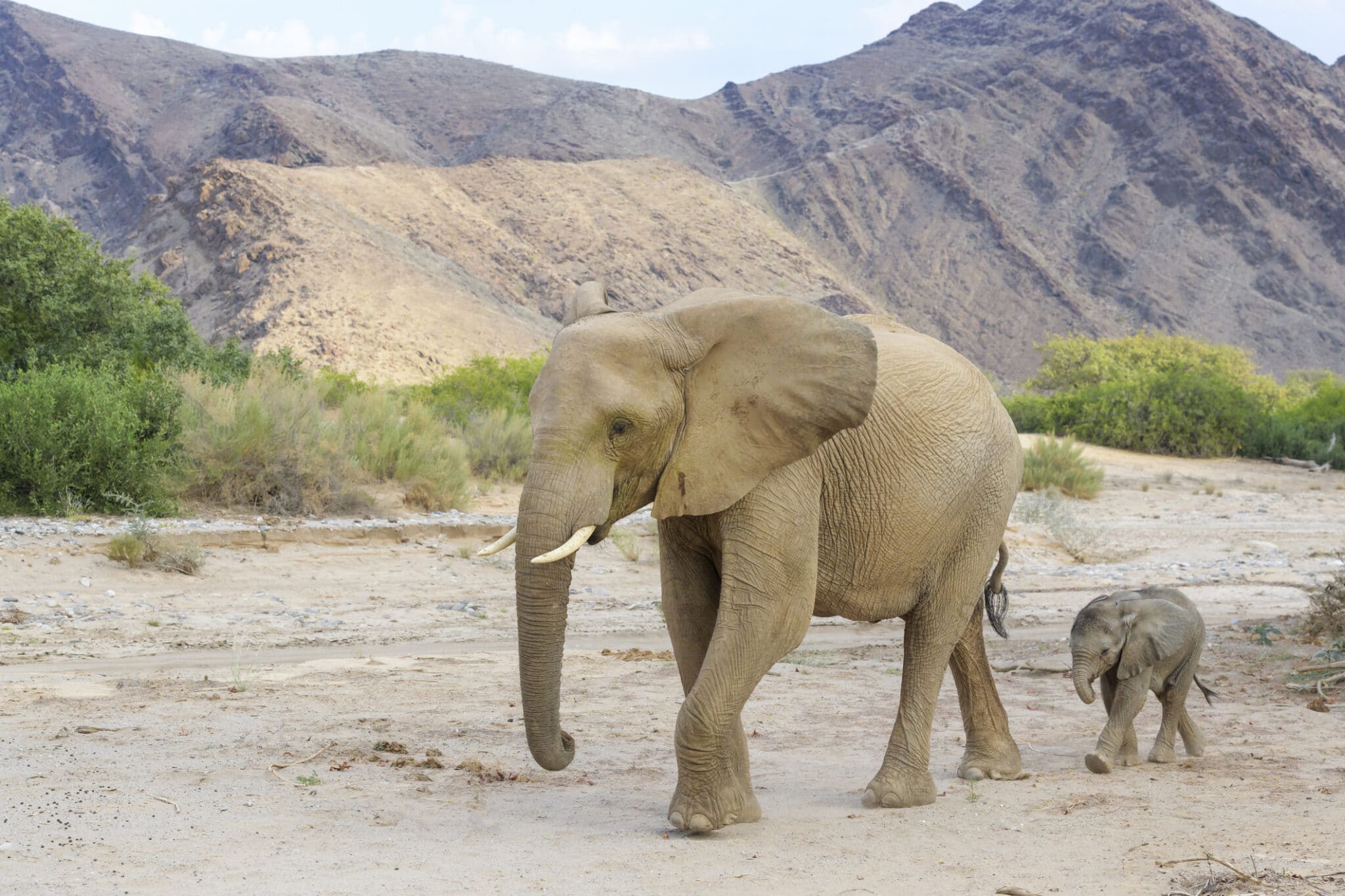If you have an adventurous spirit and yearn to explore the untamed wildernesses of Africa, a Namibia safari in Kaokoland is for you. A remote desert destination with few accommodation options, this is a truly secluded adventure that will take you across untouched landscapes – places where the Himba people still follow their traditional way of life and desert-adapted wildlife roam.
Must-Visit Areas in Kaokoland
Located in the northwest of Namibia, the landscapes of Kaokoland range from mountains to dry riverbeds and a flowing river humming with life. Don’t miss these areas in the region:
The Kunene River: Water Excursions

The Kunene River forms the border between Namibia and Angola. Travelling along the shore or during a water safari, you’ll see Nile crocodiles as well as hippos gliding just underneath the surface. Kunene is a fantastic activity for birdwatching safaris to see waterbirds.
Himba Village: Cultural Excursion

The Himba are one of Namibia’s most iconic indigenous groups, known for their red ochre-covered skin and traditional pastoral lifestyle. Visiting a Himba village a Namibia guided tour provides an opportunity to learn about their customs, from their unique beauty rituals to their deep spiritual beliefs.
Ruacana Falls: One of Africa’s Largest Waterfalls
Ruacana Falls plummets from the Kunene into a 120 m/394 ft deep and 700 m/2,296 ft wide gorge. The water levels of the river and strength of the falls depend on the fluctuating annual rainfalls in the Angolan Highlands and on the opening of the two sluices regulating the water supply for the power plants in this area. Ruacana Falls is best experienced during high water in April and May.
When’s the Best Time to Visit Kaokoland?

May to October is the dry season and is characterised by temperate weather and clear skies. This is the best time for wildlife viewing, as animals can be seen gathering around the few remaining water sources. During this time, the surrealness of the desert can be fully appreciated.
The wet summer season begins in November, with thunderstorms and hot conditions stretching into April. At this time of the year, the rainfall quenches the thirst of the land, causing green grasslands to pop up. Migratory birds from Eurasia make an appearance in Kaokoland in the wet season, making it an ideal time to visit for avid birdwatchers.
Animals Found in Kaokoland

Due to the harsh desert conditions, wildlife here is not abundant – only a few species that have adapted to the dryness of the land wander around here. Look out for rare desert-adapted elephants and lions, sometimes spotted near water sources. Antelopes in the region include springbok and gemsbok (also known as oryx).
For birders, the rare rufous-tailed palm-thrush and Cinderella waxbill are on the Kaokoland birdwatching checklist. Waterbirds of the region include kingfishers, fish eagles, and herons.
How to Get to Kaokoland
Once arriving in the capital of Namibia, Windhoek, charter flights can be arranged to Kaokoland, which is in the far northwest of the country.